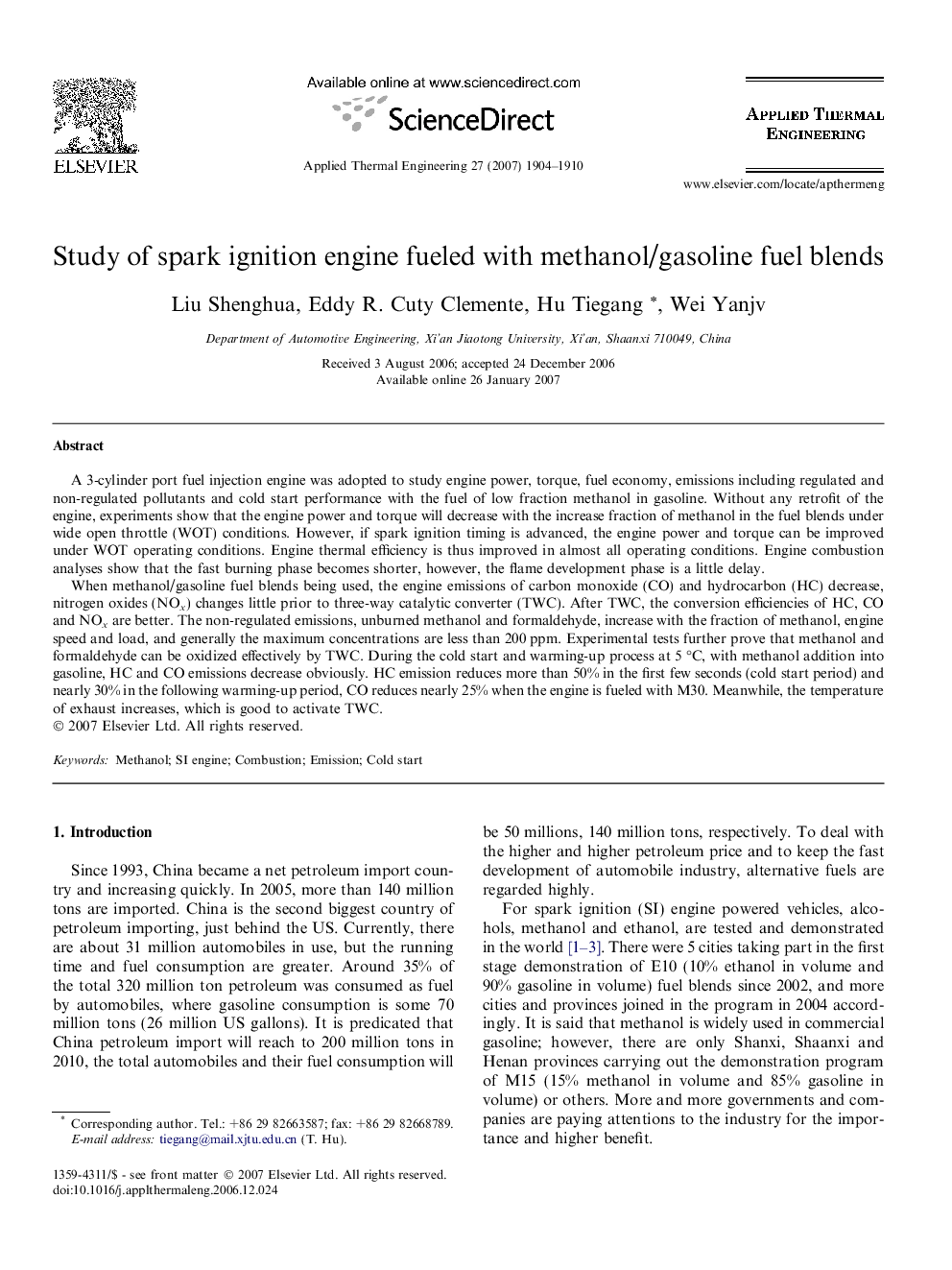| Article ID | Journal | Published Year | Pages | File Type |
|---|---|---|---|---|
| 649022 | Applied Thermal Engineering | 2007 | 7 Pages |
A 3-cylinder port fuel injection engine was adopted to study engine power, torque, fuel economy, emissions including regulated and non-regulated pollutants and cold start performance with the fuel of low fraction methanol in gasoline. Without any retrofit of the engine, experiments show that the engine power and torque will decrease with the increase fraction of methanol in the fuel blends under wide open throttle (WOT) conditions. However, if spark ignition timing is advanced, the engine power and torque can be improved under WOT operating conditions. Engine thermal efficiency is thus improved in almost all operating conditions. Engine combustion analyses show that the fast burning phase becomes shorter, however, the flame development phase is a little delay.When methanol/gasoline fuel blends being used, the engine emissions of carbon monoxide (CO) and hydrocarbon (HC) decrease, nitrogen oxides (NOx) changes little prior to three-way catalytic converter (TWC). After TWC, the conversion efficiencies of HC, CO and NOx are better. The non-regulated emissions, unburned methanol and formaldehyde, increase with the fraction of methanol, engine speed and load, and generally the maximum concentrations are less than 200 ppm. Experimental tests further prove that methanol and formaldehyde can be oxidized effectively by TWC. During the cold start and warming-up process at 5 °C, with methanol addition into gasoline, HC and CO emissions decrease obviously. HC emission reduces more than 50% in the first few seconds (cold start period) and nearly 30% in the following warming-up period, CO reduces nearly 25% when the engine is fueled with M30. Meanwhile, the temperature of exhaust increases, which is good to activate TWC.
